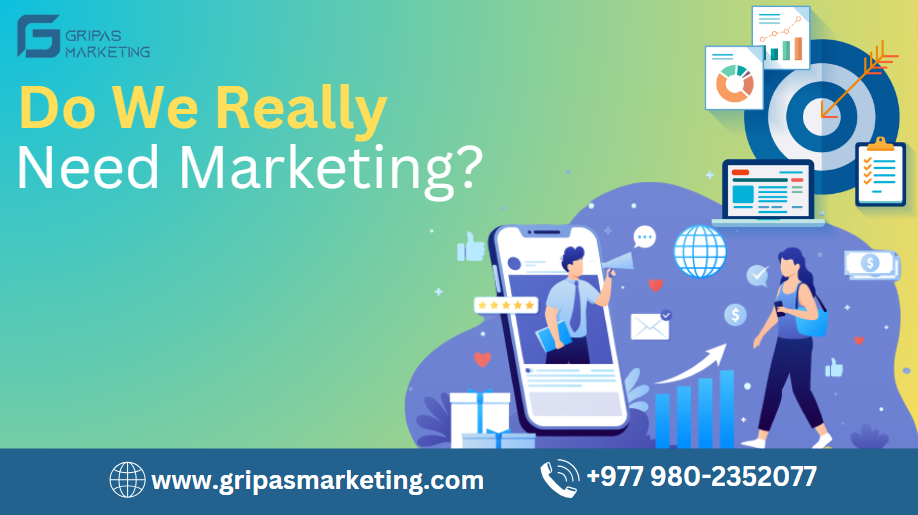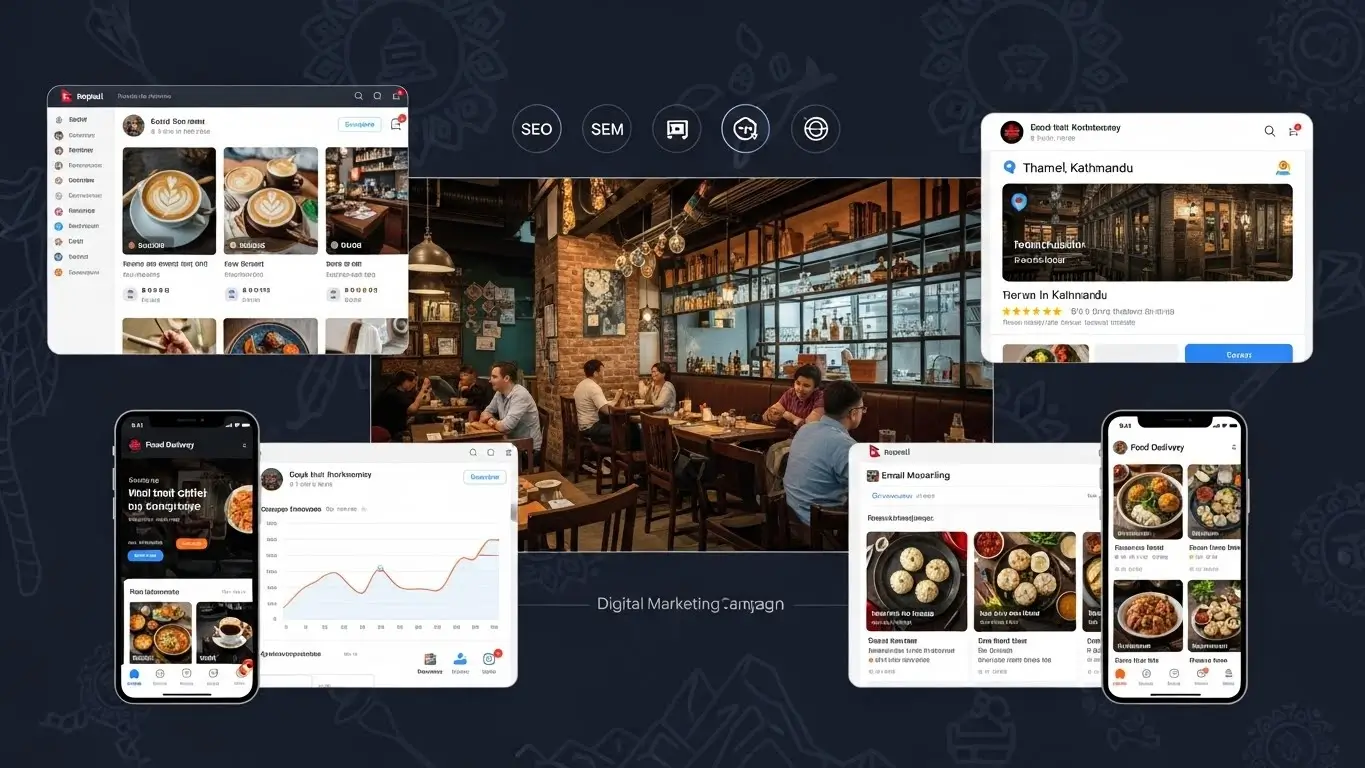Mastering the Art of Marketing
In the ever-evolving landscape of business, the role of marketing stands out as a crucial factor in achieving sustainable growth. Marketing is not just about selling products; it’s a dynamic and multifaceted discipline that involves understanding your audience, building brand identity, and creating compelling narratives. In this comprehensive guide, we will delve into the foundations of marketing, its impact on business growth, and the essential strategies that make it a powerhouse for success.
Defining the Importance of Marketing
At its core, marketing is about communication. It’s the bridge that connects businesses with their customers. Whether you’re a small startup or a well-established corporation, effective marketing is key to standing out in a crowded market. We’ll explore the fundamental importance of marketing and how it goes beyond just advertising to shape the very essence of a business.
Importance of Marketing: The Foundation of Business Growth
In the bustling world of business, where choices abound and competition is fierce, the importance of marketing cannot be overstated. Marketing serves as the foundation for the growth and success of any business, whether big or small. Let’s break down the basics, explore the role of marketing in business growth, and understand how it lays the groundwork for success.
Understanding the Basics
At its core, marketing is all about making people aware of what a business has to offer. Imagine you’ve created a fantastic product or service—how do you make sure people know about it? This is where marketing comes in. It involves various activities aimed at promoting, advertising, and communicating the value of your offerings to potential customers.
The basics of marketing include identifying your target audience, understanding their needs and preferences, and crafting a message that resonates with them. Through channels like social media, advertising, and other promotional efforts, marketing ensures that your business gets noticed in the crowded marketplace.
Building Brand Identity
Think of a brand as the personality of your business. What do you want people to think and feel when they hear your business name? Building a strong brand identity is a key component of marketing. It’s not just about having a memorable logo; it’s about creating a consistent and positive experience for your customers.
Marketing helps establish and reinforce your brand identity through storytelling, messaging, and visual elements. A strong brand identity sets you apart from competitors and builds trust with your audience. When customers have a positive perception of your brand, they are more likely to choose your products or services.
Sales Boost: Marketing’s Secret Weapon
While the word “marketing” might bring to mind flashy advertisements and creative campaigns, its ultimate goal is often simple: boosting sales. Marketing is the secret weapon that can turn a potential customer into a loyal one. Let’s explore how marketing and sales are interconnected and how they work together to drive business growth.
Connecting Marketing and Sales
Marketing and sales are like two peas in a pod. While marketing focuses on creating awareness and interest, sales take that interest and turn it into action—making a purchase. Effective communication between these two departments is crucial for success.
Marketing generates leads—potential customers who have shown interest in your products or services. These leads then move through the sales funnel, where the sales team takes over to nurture and convert them into paying customers. The collaboration between marketing and sales ensures a smooth transition from awareness to purchase.
Turning Leads into Customers
Imagine marketing as the storyteller, captivating an audience with the narrative of your brand. As the story unfolds, it sparks interest and curiosity among potential customers—these are your leads. Now, the sales team steps in to continue the story, addressing specific customer needs and guiding them toward a purchase decision.
Marketing provides the initial spark, and sales fans the flames of interest into a full-blown commitment. This synergy is what transforms leads into loyal customers. It’s not just about making a sale; it’s about building relationships that keep customers coming back for more.
Navigating the Marketing Landscape
The world of marketing is vast and ever-evolving. Navigating this landscape requires a strategic approach that adapts to changes in consumer behavior, technology, and market trends. Let’s explore some key aspects of navigating the marketing terrain.
Digital Marketing
In today’s digital age, online presence is non-negotiable. Digital marketing includes strategies like social media marketing, content marketing, and search engine optimization (SEO). These tools help businesses reach a wider audience, engage with customers, and stay relevant in the digital realm.
Data and Analytics
Data is the compass guiding your marketing efforts. Analytics tools provide valuable insights into customer behavior, preferences, and the effectiveness of your campaigns. By analyzing data, businesses can make informed decisions, optimize marketing strategies, and ensure a higher return on investment (ROI).
Adaptability
The marketing landscape is not static. Consumer preferences change, new technologies emerge, and market dynamics shift. Successful businesses embrace adaptability. Being open to trying new strategies, learning from both successes and failures and staying agile in the face of change are essential for long-term success.
Customer Feedback and Engagement
Listening to your customers is a fundamental aspect of successful marketing. Customer feedback helps businesses understand what works and what needs improvement. Engaging with your audience through social media, surveys, and other channels builds a sense of community and loyalty.
Traditional vs. Digital Marketing: Finding the Right Mix for Your Business
In the ever-evolving landscape of marketing, businesses are faced with a crucial decision: stick to traditional methods that have stood the test of time or dive into the digital realm that promises unprecedented reach and engagement.
Let’s explore the dynamics of traditional and digital marketing, the art of choosing the right channels, demystifying return on investment (ROI), debunking marketing myths, understanding marketing’s role in negotiation, achieving organizational harmony, and tapping into the productivity powerhouse that effective marketing can be.
Traditional vs. Digital Marketing
Traditional Marketing
Think of traditional marketing as the tried-and-true methods that existed long before the internet took over our lives. This includes television and radio commercials, print advertisements, billboards, direct mail, and in-person events. Traditional marketing has a tangible, familiar quality that has been ingrained in our daily lives for decades.
Pros of Traditional Marketing:
- Tangibility: Physical advertisements, such as brochures or business cards, provide a tangible connection with the audience.
- Local Reach: Traditional methods often excel in reaching a local audience, making them suitable for businesses targeting a specific geographic area.
- Established Credibility: Over the years, traditional marketing channels have built credibility and trust among consumers.
Cons of Traditional Marketing:
- Limited Analytics: Traditional methods often lack the detailed analytics that digital channels provide, making it challenging to measure the effectiveness of a campaign.
- Higher Costs: Producing and distributing traditional marketing materials can be more expensive compared to digital alternatives.
- Limited Interactivity: Traditional marketing is typically a one-way communication channel, with limited opportunities for audience interaction.
Digital Marketing
Enter the digital era, where the internet has transformed the way businesses connect with their audience. Digital marketing encompasses a wide range of strategies, including social media marketing, content marketing, email marketing, search engine optimisation (SEO), and online advertising. It leverages the vast reach of the internet to engage with a global audience in real-time.
Pros of Digital Marketing:
- Global Reach: Digital marketing allows businesses to reach a global audience, breaking down geographical barriers.
- Targeted Advertising: With digital platforms, businesses can target specific demographics, interests, and behaviours, ensuring that their message reaches the right audience.
- Detailed Analytics: Digital marketing provides robust analytics tools that offer insights into audience behaviour, allowing for data-driven decision-making.
- Cost-Effectiveness: Compared to traditional methods, many digital marketing strategies are more cost-effective, especially for small businesses.
Cons of Digital Marketing:
- Information Overload: The digital space is crowded, and consumers are bombarded with information. Standing out requires strategic planning and compelling content.
- Technological Dependence: Digital marketing relies heavily on technology, and changes in algorithms or platform policies can impact a campaign’s effectiveness.
- Learning Curve: Navigating the digital landscape requires a learning curve. Businesses must stay updated on the latest trends and technologies to remain competitive.
Choosing the Right Channels
In the age of diverse marketing channels, the key is to find the right mix that aligns with your business goals and target audience. It’s not a matter of choosing between traditional or digital; it’s about finding a harmonious balance.
Consider Your Audience:
- Demographics: Understanding the demographics of your target audience is crucial. Older demographics may still respond well to traditional methods, while younger audiences may be more accessible through digital channels.
- Behaviour: Analyse where your audience spends their time. If they are active on social media, digital channels may be more effective. If they engage with traditional media, consider incorporating those avenues.
Budget Constraints:
- Evaluate Costs: Consider your budget constraints. Digital marketing can be more cost-effective in some cases, but it’s essential to weigh the costs against potential returns. Traditional methods may have a higher upfront cost but could yield long-term benefits.
Integration is Key:
- Holistic Approach: Rather than viewing traditional and digital marketing as mutually exclusive, integrate them into a cohesive strategy. For example, use traditional methods to drive awareness and digital channels for engagement and conversion.
ROI: Unveiling the Marketing Mystery
Measuring Return on Investment:
ROI is the holy grail of marketing effectiveness. It’s the metric that tells you whether your marketing efforts are translating into tangible results. Understanding and measuring ROI is crucial for making informed decisions and optimising your marketing strategy.
Steps to Measure ROI:
- Set Clear Goals: Define specific, measurable goals for your marketing campaigns. Whether it’s increased website traffic, lead generation, or sales, having clear objectives makes measuring ROI more straightforward.
- Track Conversions: Use tools like Google Analytics or other analytics platforms to track conversions. Conversions could be purchases, form submissions, or any other actions that align with your goals.
- Attribution Models: Understand how different touchpoints contribute to conversions. Attribution models help you assign value to each interaction a customer has with your brand before making a purchase.
- Calculate Costs: Determine the costs associated with your marketing efforts, including advertising spend, campaign creation, and any other relevant expenses.
- ROI Formula: The basic ROI formula is (Net Profit / Cost of Investment) x 100. This gives you a percentage that represents the return on your marketing investment.
Setting Realistic Goals:
While the dream is to achieve astronomical success, setting realistic goals is crucial for maintaining motivation and ensuring a positive ROI. Goals should be specific, measurable, achievable, relevant, and time-bound (SMART).
Example of SMART Goals:
- Specific: Increase website traffic by 20%.
- Measurable: Use analytics tools to track the percentage increase.
- Achievable: Based on past performance, determine if a 20% increase is feasible.
- Relevant: Ensure that the goal aligns with your overall business objectives.
- Time-Bound: Set a deadline for achieving the 20% increase, such as within the next quarter.
Marketing Myths and Realities
Busting Common Misconceptions:
In the world of marketing, myths and misconceptions abound. Let’s debunk some common myths to reveal the realities behind effective marketing.
Myth 1: Marketing is Only for Big Businesses
- Reality: Effective marketing is not exclusive to big businesses. In fact, small and medium-sized businesses can leverage targeted strategies to compete effectively in their niche.
Myth 2: More Traffic Equals More Sales
- Reality: While increased traffic is a positive indicator, the quality of traffic matters more than quantity. Targeted traffic that aligns with your ideal customer profile is more likely to convert into sales.
Myth 3: Marketing is a One-Time Effort
- Reality: Successful marketing requires consistency. It’s an ongoing effort that involves building relationships, adapting to market changes, and staying top-of-mind with your audience.
Myth 4: Social Media is Only for B2C Businesses
- Reality: Social media can be a powerful tool for both B2C and B2B businesses. It’s a platform for building brand awareness, engaging with your audience, and even generating leads in the B2B space.
The Truth About Marketing Effectiveness:
Marketing is not a magic wand that guarantees instant success. It’s a dynamic process that requires understanding, adaptability, and a commitment to continuous improvement. The effectiveness of marketing lies in its ability to connect with the right audience, communicate value, and build lasting relationships.
The Art of Negotiation
Marketing’s Influence on Negotiation:
Believe it or not, marketing plays a significant role in the art of negotiation. It sets the stage for how your business is perceived, influencing the way potential partners, clients, or investors approach negotiations.
Ways Marketing Influences Negotiation:
- Brand Perception: A strong brand, built through effective marketing, creates a positive perception. This can give your business a negotiating edge as partners may view your brand as trustworthy and reliable.
- Value Proposition: Marketing shapes your value proposition—the unique value your business brings to the table. A compelling value proposition strengthens your negotiation position by highlighting what sets you apart.
- Market Positioning: How your business is positioned in the market, relative to competitors, impacts negotiation dynamics. Marketing strategies that showcase your strengths and market position can influence negotiations positively.
Crafting Compelling Value Propositions:
Your value proposition is the promise of value you deliver to your customers or partners. Crafting a compelling value proposition is an essential aspect of effective marketing and can significantly impact negotiation outcomes.
Elements of a Compelling Value Proposition:
- Clarity: Clearly articulate the value your business provides. Avoid jargon and ensure that anyone can understand why your product or service is valuable.
- Differentiation: Highlight what sets you apart from competitors. Whether it’s unique features, exceptional customer service, or a competitive price point, emphasize what makes your business unique.
- Relevance: Your value proposition should directly address the needs and pain points of your audience. Show how your product or service solves a specific problem or fulfills a crucial desire.
- Credibility: Back up your claims with evidence. This could include customer testimonials, case studies, or data that demonstrates the effectiveness of your offering.
Integrating Marketing into the Business Structure:
For marketing to truly drive business growth, it must be seamlessly integrated into the organizational structure. It’s not a standalone department but a collaborative force that permeates every aspect of the business.
Key Components of Integration:
- Cross-functional collaboration: Foster collaboration between marketing and other departments, such as sales, customer service, and product development. A cohesive approach ensures that everyone is aligned with the overall business goals.
- Unified Messaging: Ensure that messaging is consistent across all departments. From customer interactions to product communications, a unified message strengthens your brand and builds trust.
- Customer-Centric Culture: Infuse a customer-centric culture into the organization. Understand and prioritize the needs of your customers, and let this perspective guide decision-making across departments.
Achieving Synergy Between Departments:
The synergy between marketing and other departments is a powerful catalyst for business success. When different teams work harmoniously toward common goals, the impact is greater than the sum of individual efforts.
Examples of Synergy:
- Marketing and Sales: Collaboration between marketing and sales ensures a smooth transition from lead generation to customer acquisition. Regular communication and shared goals create a seamless customer journey.
- Marketing and Product Development: Marketing insights can inform product development strategies. Understanding customer needs and preferences allows the product development team to create offerings that resonate with the target audience.
- Marketing and Customer Service: Marketing sets expectations, and customer service ensures those expectations are met. By aligning these two departments, businesses can deliver a consistent and positive customer experience.
The Productivity Powerhouse
Effective marketing is not just about generating leads or increasing sales; it’s a productivity powerhouse that can transform the way a business operates. Let’s explore how marketing contributes to organizational productivity.
Efficient Resource Allocation:
Marketing analytics provide insights into the performance of different campaigns and channels. By analyzing data, businesses can identify high-performing strategies and allocate resources more efficiently. This ensures that time and budget are invested in tactics that yield the best results.
Streamlined Customer Acquisition:
Through targeted marketing efforts, businesses can streamline the customer acquisition process. By understanding the needs and preferences of their audience, marketing teams can create campaigns that resonate, leading to more efficient and effective customer acquisition.
Enhanced Communication:
Marketing is not just about promoting products; it’s about communication. Clear and compelling communication, both internal and external, is a hallmark of successful marketing. This enhanced communication fosters a collaborative and informed organisational culture.
Innovation and Adaptability:
Marketing encourages a culture of innovation and adaptability. Constantly seeking new ways to connect with audiences, experimenting with different strategies, and staying attuned to market trends are all part of the marketing mindset. This culture of innovation permeates the entire organisation, driving productivity and growth.
Title: Navigating Success: The Power of Marketing in Business Transformation
In the fast-paced world of business, the role of marketing goes beyond mere promotion—it’s a dynamic force that can streamline processes, maximise efficiency, and pave the way for success. In this blog, we’ll explore how marketing acts as a catalyst for change, featuring real-world case studies, the crucial link between marketing and SEO, the transformative power of social media, future trends to anticipate, and the enduring human touch that makes marketing resonate with audiences.
Streamlining Processes with Marketing
Effective marketing is not just about creating catchy slogans or eye-catching visuals. It’s a strategic tool that can streamline various processes within a business. From customer acquisition to product development, marketing provides insights that enable businesses to optimise their operations. By understanding customer needs, marketing teams can help tailor products and services, reducing unnecessary complexities and aligning resources more efficiently.
Maximizing Efficiency
Efficiency is the key to staying competitive in the business world. Marketing, when done right, enhances efficiency by targeting the right audience with the right message. This reduces the time and resources spent on reaching potential customers who may not be interested in the product or service. Through data-driven insights and targeted campaigns, marketing ensures that every effort contributes to the overall efficiency of the business.
Case Studies: Marketing Success Stories
Real-world examples speak louder than theories. Let’s delve into a few case studies that showcase how businesses have transformed through effective marketing strategies:
- Apple Inc.: Apple‘s marketing brilliance is evident in its ability to create a community around its products. Through sleek advertising, minimalist design, and a focus on user experience, Apple has not only increased sales but also cultivated a loyal customer base that eagerly anticipates new product releases.
- Dollar Shave Club: This startup disrupted the razor industry through a clever marketing campaign. A humorous promotional video went viral, showcasing the company’s value proposition of delivering quality razors at a fraction of the cost. This innovative approach led to a significant increase in subscribers and forced established brands to reevaluate their marketing strategies.
These case studies highlight the power of understanding your audience, crafting compelling messages, and adapting to market needs.
SEO: A Vital Component
In the digital age, the intersection of marketing and Search Engine Optimization (SEO) is crucial. Here’s why:
The Intersection of Marketing and SEO:
Marketing and SEO work hand in hand to boost a business’s online presence. SEO ensures that your content is not only compelling but also optimised for search engines, increasing the chances of reaching a broader audience. For example, if you’re a small bakery, SEO can help your website appear in local searches when someone is looking for “fresh pastries near me.”
Optimising Content for Search Engines:
Successful marketing includes creating content that resonates with your audience and is easily discoverable through search engines. This involves using relevant keywords, creating shareable content, and maintaining a user-friendly website. The goal is to not only attract visitors but also convert them into customers.
Social Media: Beyond Likes and Shares
Social media is not just a platform for accumulating likes and shares; it’s a dynamic tool for marketing. Here’s how businesses leverage social media to their advantage:
Leveraging Social Media for Marketing:
Platforms like Facebook, Instagram, and Twitter provide businesses with direct access to their target audience. By creating engaging content and fostering a sense of community, businesses can turn their social media presence into a powerful marketing tool. For instance, a clothing brand might use Instagram to showcase its latest designs and interact with customers in real-time.
Building a Community Around Your Brand:
Successful brands on social media don’t just sell products; they build communities. Through consistent engagement, responding to customer inquiries, and even incorporating user-generated content, businesses can create a loyal following. This community becomes a valuable asset, as satisfied customers are more likely to recommend the brand to others.
Future Trends in Marketing
The marketing landscape is ever-evolving. Anticipating future trends is essential to staying ahead of the competition. Here are some trends to keep an eye on:
Anticipating Changes in the Marketing Landscape:
- Personalisation: Tailoring marketing efforts to individual preferences is becoming increasingly important. From personalised email campaigns to targeted advertisements, businesses that can provide a personalised experience will stand out.
- Video Content: With attention spans decreasing, video content is gaining prominence. Short, engaging videos are more likely to capture the audience’s attention than lengthy text-based content.
Staying Ahead of the Curve:
To stay ahead, businesses need to embrace innovation. This might involve exploring emerging technologies like augmented reality (AR) or virtual reality (VR) to create immersive brand experiences. Additionally, staying updated on shifts in consumer behaviour and preferences is crucial for adapting marketing strategies accordingly.
The Human Touch in Marketing
Amid technological advancements, the human touch remains the cornerstone of effective marketing:
Connecting Emotionally with the Audience:
Successful marketing goes beyond transactional relationships; it taps into emotions. Businesses that can evoke positive emotions through their marketing efforts create a lasting impact. Whether it’s through storytelling, humour, or relatability, emotional connections build brand loyalty.
Building Lasting Relationships:
The goal of marketing isn’t just to make a sale; it’s to build lasting relationships with customers. This involves ongoing communication, addressing customer concerns, and adapting based on feedback. The brands that prioritise relationships over transactions are the ones that thrive in the long run.
Conclusion
Summarising the key takeaways, this exploration into the multifaceted world of marketing underscores its undeniable need in the business realm. From streamlining processes to leveraging the power of SEO, social media, and anticipating future trends, effective marketing is a transformative force.
Yet, amidst all the technological advancements, it’s the human touch that ultimately distinguishes successful marketing efforts. As businesses navigate the ever-changing landscape, understanding and embracing the evolving role of marketing is not just an option—it’s a strategic imperative for sustained growth and success.



